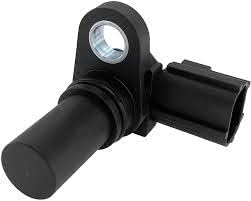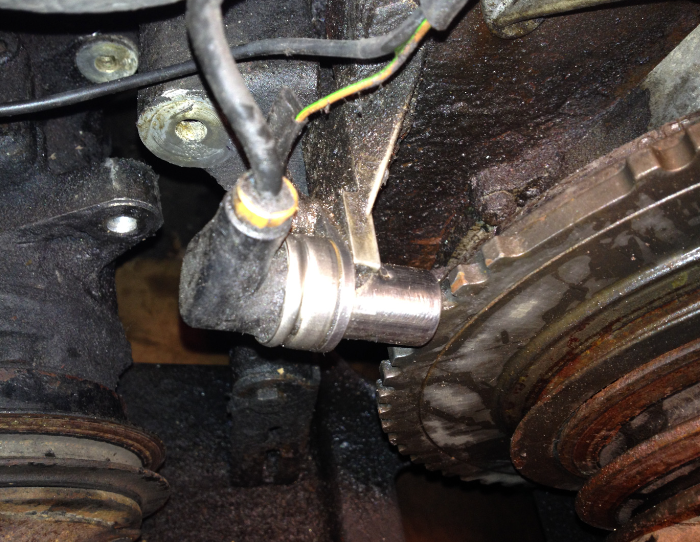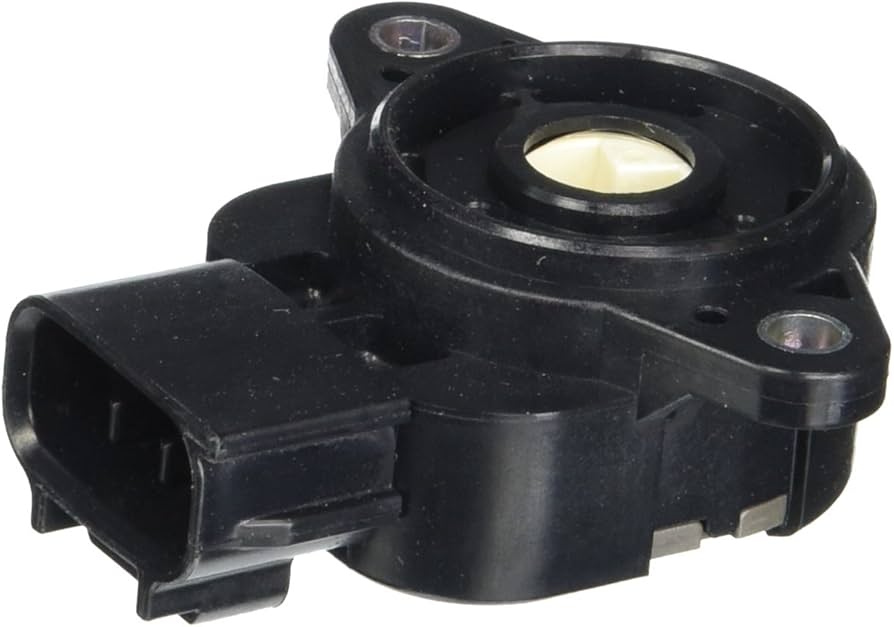Crankshaft Position Sensor
Location:
Varies, usually found towards the bottom of the block either near the timing cover or transmission bell
Function:
Reads the position and speed of the crankshaft, determines engine RPM
Description:
The crankshaft position sensor allows the ECM to know what the crankshaft position is, therefore knowing where each of the pistons are. The ECM uses this information to determine proper fuel injection and ignition timing. In addition to this, the ECM also uses input from the camshaft position sensor to verify that timing between the crankshaft and camshafts is accurate. Lastly, the ECM uses this sensor to measure the revolutions per minute (RPM) of the engine to pass along to the tachometer gauge.
The CKP sensor is a Hall-effect sensor, meaning it monitors magnetic fields. This sensor is always located close to the timing gear, flywheel, or another toothed-gear located on the crankshaft. As the gear spins, the head of the sensor faces the teeth and reads the pattern as they rotate. The CKP sensor will pulse volts of electricity with each tooth that passes.
The key to this system is that the gear its facing has one tooth missing around the edge. As this passes the CKP sensor, it skips an electrical pulse, and this is what lets the ECM know the position of the crankshaft as well as the engine's RPM.

Crankshaft Position Sensor

Location and Missing Tooth




